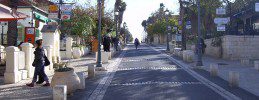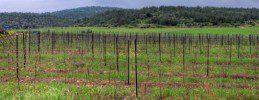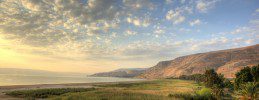Wine and History in the North
July 2nd 2012
 The north of Israel is an idyllic landscape of rolling hills and lush vegetation. Visit the Carmel Winery – the country’s biggest and oldest winery – and learn about winemaking in the region all while tasting samples. Continue your tour of the area with stops at the informative Museum of Illegal Immigration and Graves of the Holy Sages in Tiberias.
The north of Israel is an idyllic landscape of rolling hills and lush vegetation. Visit the Carmel Winery – the country’s biggest and oldest winery – and learn about winemaking in the region all while tasting samples. Continue your tour of the area with stops at the informative Museum of Illegal Immigration and Graves of the Holy Sages in Tiberias.
 The picturesque town of Zichron Yaakov, just south of Mount Carmel and overlooking the Mediterranean is a pleasant place to unwind during your tour to Israel. One of the first Jewish settlements in modern Israel, the town was founded in 1882 by wealthy Frenchman and Zionist Baron de Rothschild, a member of the banking Rothschild family.
The picturesque town of Zichron Yaakov, just south of Mount Carmel and overlooking the Mediterranean is a pleasant place to unwind during your tour to Israel. One of the first Jewish settlements in modern Israel, the town was founded in 1882 by wealthy Frenchman and Zionist Baron de Rothschild, a member of the banking Rothschild family.

While there is evidence of winemaking in ancient Israel, production had ceased for centuries, and it was Rothschild who was responsible for its revival in the Holy Land. Under his tutelage and oversight (and with his financial support), French grapevines were planted in Zichron Ya’akov, and the Carmel Winery was founded, also in 1882. Israel’s climate proved ideal for winemaking, and today the Carmel Winery is the largest in the country, with 3,472 acres of vineyards yielding 15 million bottles per year. All their wines are certified Kosher Mehadrin for Passover and have been internationally recognized for their quality.
Visitors to the region would be amiss to pass over a trip to the Carmel Winery. Stop by their beautiful and welcoming Center for Wine Culture visitor’s center, where they have a restaurant, tasting rooms, a wine shop and historic cellars. Simply taste a few of their award-winning wines or add on a tour of the underground wine cellars built by Rothschild himself in the 1880s. Either way, you will get a taste – literally – of Israeli wine and history.
Once you’ve gotten your fill of wine, continue with your historical tour of Israel with a visit to the nearby Museum of Illegal Immigration. Housed in a former detention camp, the museum tells the story of the Jewish immigrants who came to Israel illegally during the British Mandate period in the 1930s and 1940s. Atlit, at the museum is called in Hebrew, speaks to an oft forgotten chapter in history, as Jews fleeing Nazi persecution arrived in Israel only to be put in detention centers.
 Further north, visit Tiberias, one of the four holy cities of Judaism. Gorgeously located on the western shore of the Sea of Galilee, it is here that you can visit the Graves of the Holy Sages, including Rabbi Akiva, Rabbi Meir, Maimonides (also known as the Rambam) and many others.
Further north, visit Tiberias, one of the four holy cities of Judaism. Gorgeously located on the western shore of the Sea of Galilee, it is here that you can visit the Graves of the Holy Sages, including Rabbi Akiva, Rabbi Meir, Maimonides (also known as the Rambam) and many others.











